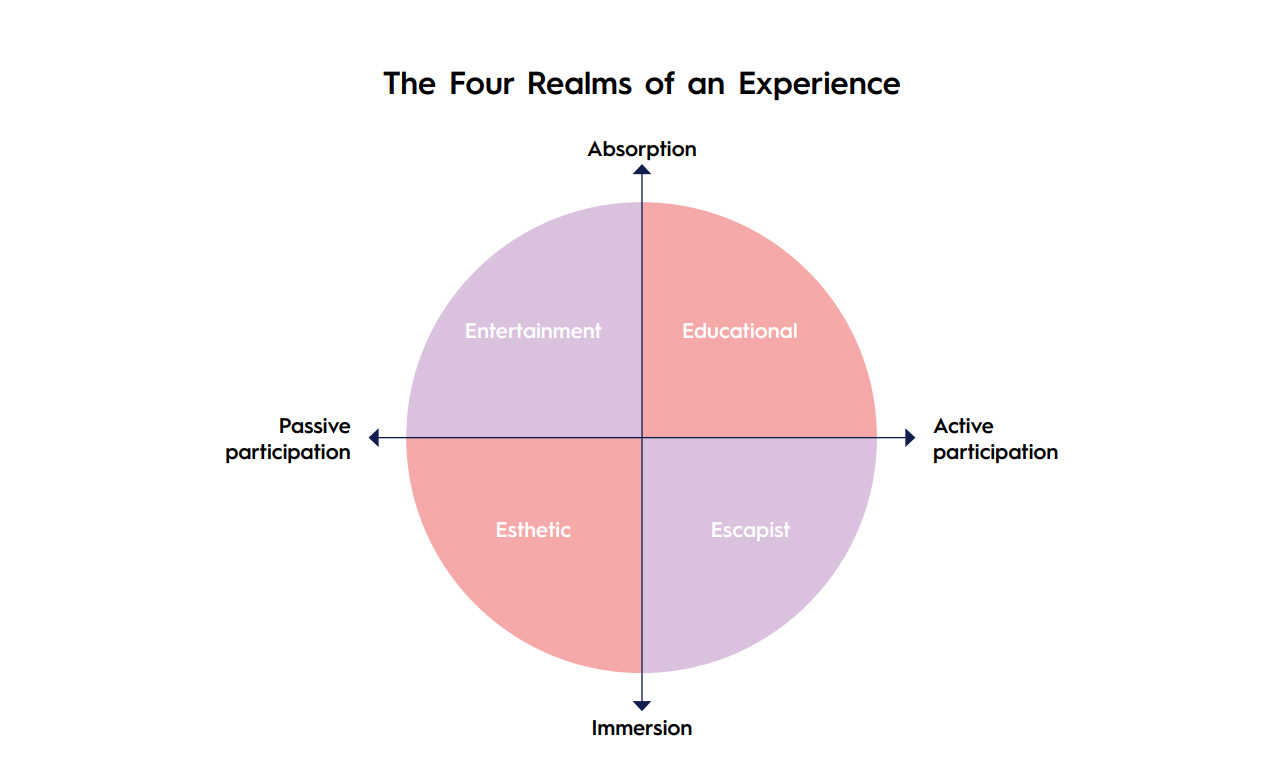Engaging customers with themed hospitality experiences


Designing experiences for emotional outcomes is not a new idea, but harnessing the best in hospitality concepts for accessing those emotions has recently become a growing trend with established brands. Tesla is planning a 24-hour diner in Los Angeles with a drive-in theater. FILA and Hello Kitty are teaming up with Hyatt to open themed hotels in China. Porsche Design and Steigenberger are building 15 luxury lifestyle hotels in Germany. Ralph Lauren has opened a café in Malaysia. Elle, the fashion magazine, will open a boutique hotel in Paris and expand to 15 hotels soon. In the meantime, Bulgari and Armani are also expanding their footprint in the hotel industry.
Why are the automobile, sportswear and fashion sectors entering the hospitality industry and using it to entice new customers and create loyalty? There are several reasons, all heavily rooted in the shift in perception of what constitutes a meaningful service-based purchase.
Why choose the hospitality industry?
The hospitality industry’s DNA is rooted in hosting, entertaining and, quintessentially, an exchange based on human interaction. From hosting foreign pilgrims and travelers to entertaining royalty and nobles, the notion of hospitality signifies safety, relaxation, comfort, courtesy and entertainment.
Built on these positive themes, companies across the board are choosing to use hospitality spaces to showcase their brand promise, brand personality and tone of voice. At its most basic level, this is done via design, decoration and, above all, the exchange between employees and customers. In this context, a consumer product company can creatively express its brand by using music, smell, light, color, flavors and furniture textures in a convivial environment – in brief, the experiential and sensorial setting that hospitality has been using for centuries.
Today more than ever, the hospitality industry is providing the ideal stage for companies to conduct their sensory marketing as a holistic experience that can cut through the noise between a brand and its target customers. This stage appeals to existing customers while enticing new ones, and is based on the creation of emotional connections.
What is sensory marketing?
Sensory marketing is “marketing that engages the consumers’ senses and affects their perception, judgment, and behavior”. The ubiquitous marketing communication approach tends to overload consumers with information, consequently turning off their attention. However, sensory marketing offers more options to work with beyond the visuals, leveraging senses such as hearing, touch, smell and taste, and hence, can escape the conscious effort of turning them off.
For example, travelers can quickly identify Bombay Sapphire at duty-free shops because of its unique blue bottle. People recognize the Netflix jingle even if they do not have a Netflix subscription. Tourists to Japan will not forget the warmth of a Japanese toilet seat. The smell of Ivory soap or Johnson’s baby shampoo evokes childhood memories and triggers Proustian emotions in many people.
In The Experience Economy, authors Pine II and Gilmore suggest that companies must first select a theme to stage an experience, then harmonize impressions with positive cues - while, at the same time, eliminating negative ones. Lastly, but most importantly, they should engage the five senses of customers. The companies mentioned in the introduction above have strong brand personalities and well-developed brand narratives, enabling them to conduct storytelling with themed hospitality operations. The brand narratives and stories provide the framework to coordinate different sensory marketing tactics.
“… experiences are a distinct economic offering, as different from services as services are from goods. Today we can identify and describe this fourth economic offering because consumers unquestionably desire experiences, and more and more businesses are responding by explicitly designing and promoting them. As services, like goods before them, increasingly become commoditized - experiences have emerged as the next step in what we call the ‘progression of economic value’. From now on, leading-edge companies - whether they sell to consumers or businesses - will find that the next competitive battleground lies in staging experiences.”
How to create themed experiences?
Not all companies can afford to open their branded hotels or restaurants. However, that does not mean small companies cannot engage their customers with themed experiences. To start with, companies must understand their target customers’ needs, wants and values. As goods and services have become commodities, companies should aim to inspire their customers with core values or purposes. Halloween decorations are an option while raising funds for the elderly is another. The decision depends on the target customers and brand narrative. No matter which theme the company selects, it should avoid focusing on selling but rather staging the experience to engage the participants.
In The Experience Economy, the authors encourage companies to play with guest participation (active vs. passive) and connection (absorption vs. immersion) and create a space among the four realms of an experience (entertainment, educational, escapist and esthetics). Experiences can be a mix of entertainment and education, offering participants to act (escapist) or appreciate (esthetics).

Once companies have identified the theme, they can make an inventory of the existing sensory marketing assets, such as logos, colors and slogans. They can then explore opportunities using other senses: olfactory, tactile, auditory and gustatory, to enrich the storytelling and strengthen brand associations.
Companies should also incorporate opportunities to create human interactions between customers and employees. For example, the first respondents to the themed experience are probably loyal customers who know and love the brand. Companies can purposely create human interaction by playing with the physical design layout, scheduling short discussions about the brand history or future development, and facilitating conversations among these like-minded participants. These activities will create emotions, memories and stronger brand loyalty. Furthermore, companies can expect some people to be more interested in experiences than the brands. Nevertheless, a successful themed experience may communicate the brand promise more effectively and convert these people into new customers.
At a glance
Emotion vs. ownership: Why the shift?
In today’s highly digitalized, post-Covid society, consumer values have shifted and many people prefer to buy experiences rather than products. At the root of this shift is the simple human condition: people are increasingly suffering from detachment and loneliness. A deeper sense of meaning and satisfaction is attached to an experience compared to the traditional value of owning something. A memorable experience comes with a greater emotional engagement, which consequently creates customer loyalty. Companies should be looking to create themes to further engage with their customers. No matter the brand, expanding the existing customer base to become more of a ‘community base’ results in many benefits: a diversified offer and a more rewarding customer journey.
How can this benefit SMEs?
There are many niche opportunities for all types of businesses – big and small - to help people reconnect to real life and real human interaction by weaving the experiential into the offer. In brief, creating a counterbalance to the loneliness of too much working from home, Covid isolation and the onslaught of social media. Take the example of WASBAR, a convivial laundromat in the Netherlands, where a usually tedious location for washing clothes is transformed into a place for sharing food, meeting people and hosting parties. Use your business space for creating an environment that weaves human interaction into the service offer.
How can the role of human interaction be harnessed more?
Commodities cost money to make. Human experience and human interaction are local, free and easy to set up. A way for brands to increase their customer awareness and loyalty is to create experiences for like-minded people, i.e., groups, communities and activities based on what the brand represents, (e.g., events organized by the Patagonia clothing brand). Think about what kind of person your brand attracts: What are their hobbies, age groups, and what are the stages of life they are going through? Could employees take on a host, entertainer, expert, or actor role? We are familiar with hotel honeymoon packages, but what about divorce packages where the expression of a more difficult life chapter could also be marked as an ‘occasion’? Expanding on the possibilities of the human experience is where innovation lies.